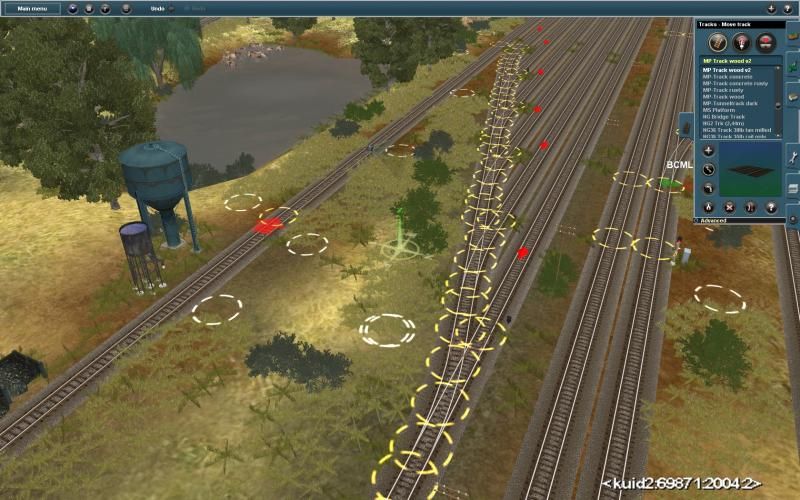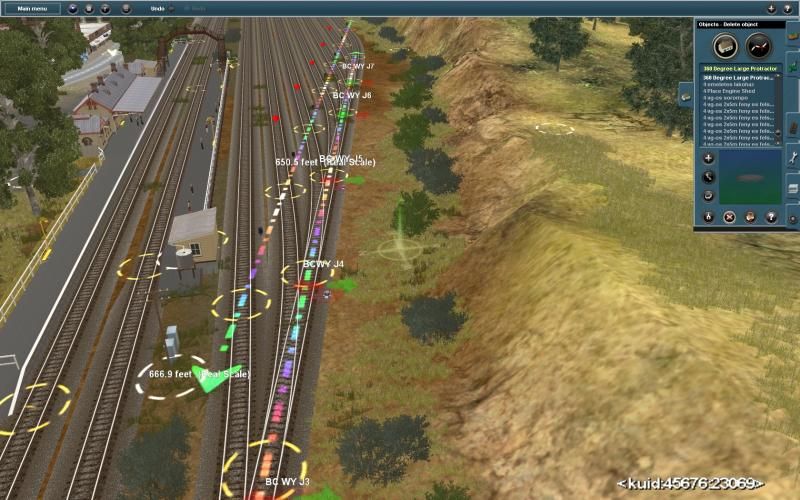Hi All,
First I must state I do not wish to rubbish someone els's work here, but I feel I must make a statement about the construction of turnouts and ladder yards in Trainz.
The first picture here is what I would call a gross over use of spline points.

Author has gone to extreme trouble to get this ladder yard smooth but as the second picture points out this is not necessary.

This second pic is the other end of the same yard which I have redone the way I always do ladder yards.
The first ruler is there to keep the entry track straight. The second ruler is to place the first spline point on each track which is where the track is straightened.
These two rulers are parallel although they do not appear to be in the picture. This second ruler can also be used to line up your exit signals and trackmarks.
This way takes a lot less work and to me, it looks a lot better in surveyor.
Any Comments welcomed.
Cheers,
Bill69
First I must state I do not wish to rubbish someone els's work here, but I feel I must make a statement about the construction of turnouts and ladder yards in Trainz.
The first picture here is what I would call a gross over use of spline points.

Author has gone to extreme trouble to get this ladder yard smooth but as the second picture points out this is not necessary.

This second pic is the other end of the same yard which I have redone the way I always do ladder yards.
The first ruler is there to keep the entry track straight. The second ruler is to place the first spline point on each track which is where the track is straightened.
These two rulers are parallel although they do not appear to be in the picture. This second ruler can also be used to line up your exit signals and trackmarks.
This way takes a lot less work and to me, it looks a lot better in surveyor.
Any Comments welcomed.
Cheers,
Bill69



